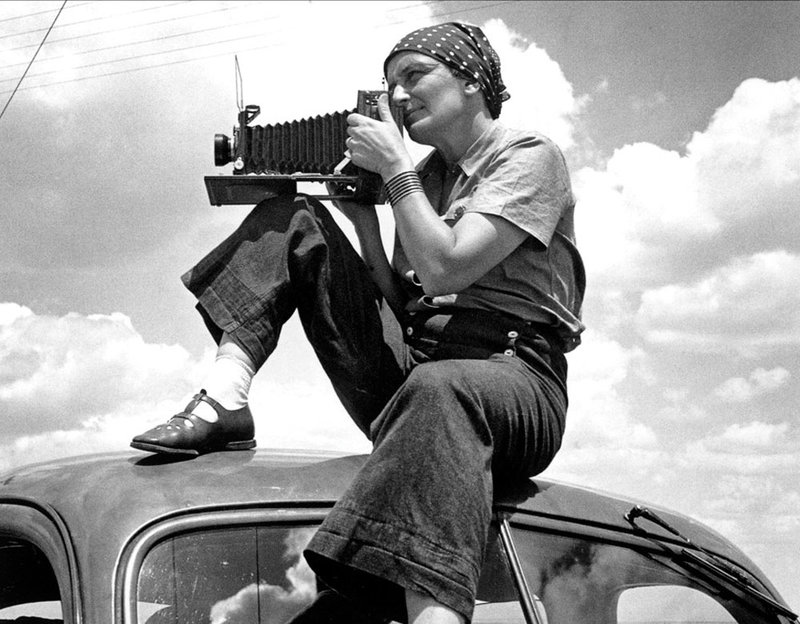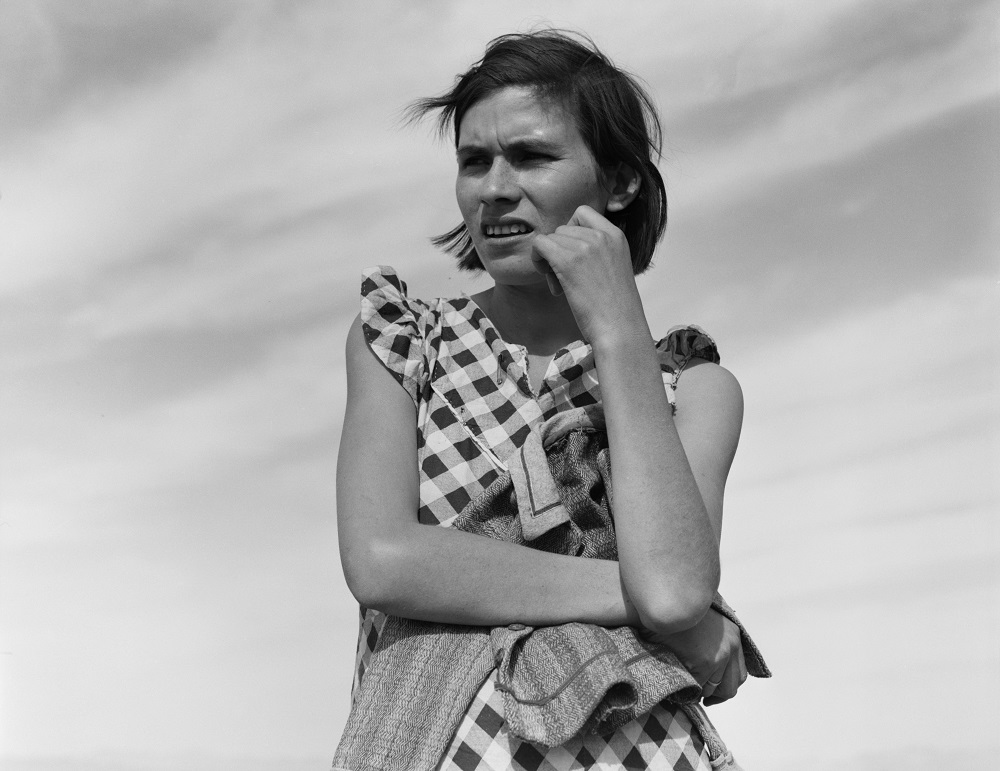
Dorothea Lange: The Unflinching Gaze That Defined an Era
In the annals of 20th-century photography, few names resonate with the profound empathy and unflinching truth-telling of Dorothea Lange. Her lens, often focused on the marginalized and forgotten, did more than merely capture images; it bore witness, stirred national consciousness, and ultimately redefined the power of documentary photography. From the breadlines of San Francisco to the dust-choked fields of the American heartland and the desolate internment camps, Lange’s work became the visual conscience of a nation grappling with unprecedented economic and social upheaval.
Born Dorothea Margaretta Nutzhorn in Hoboken, New Jersey, in 1895, Lange’s path to becoming one of America’s most influential photographers was shaped by an early encounter with adversity. At the age of seven, she contracted polio, leaving her with a permanent limp. This physical vulnerability, Lange would later reflect, was not a hindrance but a profound gift. “It was the most important thing that ever happened to me,” she once stated. “It formed me, guided me, instructed me, helped me, and humiliated me. All those things at once. I’ve never gotten over it, and I am aware of the force and power of it.” This early experience cultivated in her an acute sensitivity to human suffering and an innate ability to connect with people on a deeply personal level, a trait that would become the hallmark of her photographic practice.
After studying photography at Columbia University under Clarence H. White, a pioneer of American art photography, Lange embarked on a journey that led her to San Francisco in 1918. Here, she established a successful portrait studio, catering to the city’s elite. For over a decade, her reputation as a skilled society photographer grew, yet a deeper calling lay dormant, waiting for the seismic shifts of the Great Depression to awaken it.

The economic collapse of 1929 and the ensuing decade of hardship profoundly altered the American landscape and, with it, Lange’s artistic trajectory. The prosperity she had once documented vanished, replaced by widespread poverty, unemployment, and despair. From the windows of her studio, she observed the grim reality unfolding on the streets – lines of jobless men, families displaced, a nation in crisis. This stark contrast between her studio’s controlled environment and the raw human drama outside compelled her to turn her lens outward. “I saw the breadlines, and I knew I had to photograph them,” she recalled. “I simply took my camera and went out to the street.”
This pivotal moment marked her transition from studio portraitist to a committed social documentarian. Her early street photographs, such as the iconic "White Angel Breadline" (1933), depicting an elderly man with his back turned, hunched over a railing as others wait for food, captured the silent dignity and profound despair of the era. These images quickly caught the attention of Paul S. Taylor, a progressive economist at the University of California, Berkeley. Taylor, who would later become her husband and lifelong collaborator, recognized the power of Lange’s photographs to humanize the statistics of poverty and advocate for social change.
In 1935, Lange joined the Resettlement Administration (RA), which soon evolved into the legendary Farm Security Administration (FSA). Under the leadership of Roy Stryker, the FSA’s photographic unit embarked on an ambitious mission: to document the lives of ordinary Americans affected by the Depression and the Dust Bowl, thereby garnering public support for government relief programs. Lange, alongside photographers like Walker Evans and Arthur Rothstein, became a key contributor to this monumental visual archive.
Her work for the FSA took her across the American West and South, documenting the plight of migrant farmworkers, dispossessed farmers, and their families. Lange’s approach was unique. She didn’t just photograph her subjects; she spent time with them, listened to their stories, and built trust. Her patience and respect allowed her to capture moments of raw emotion and profound humanity. She believed that the camera was not merely a recording device but an "instrument that teaches people how to see without a camera." Her subjects, often weary and impoverished, gaze directly into her lens, not with shame, but with a quiet resilience that speaks volumes.
It was during this period, in March 1936, that Lange captured her most enduring and globally recognized image: "Migrant Mother." Driving through Nipomo, California, she spotted a sign for a pea pickers’ camp. Despite being on her way home, she felt an inexplicable pull to stop. There, amidst the squalor, she found Florence Owens Thompson, a 32-year-old mother of seven, and her children. Lange took six photographs in quick succession, with "Migrant Mother" being the fifth frame. The image, depicting Thompson with a worried, distant gaze, her hand resting on her chin, while two of her children bury their faces into her shoulders, became the quintessential symbol of the Great Depression’s human cost.
"I saw and approached the hungry and desperate mother, as if drawn by a magnet," Lange recounted. "I did not ask her name or her history. She told me her age, that she was thirty-two. She said that they had been living on frozen vegetables from the surrounding fields, and birds that the children caught. She had just sold the tires from her car to buy food." The photograph was immediately published in the San Francisco News, prompting authorities to send 20,000 pounds of food to the camp. "Migrant Mother" not only galvanized public support for relief efforts but also cemented Lange’s place as a master of visual storytelling. Its enduring power lies in its ability to transcend time and place, embodying universal themes of struggle, resilience, and maternal strength.
While "Migrant Mother" remains her most famous work, Lange’s contributions extended far beyond the Dust Bowl. Following the attack on Pearl Harbor in 1941, she was commissioned by the War Relocation Authority (WRA) to document the forced internment of Japanese Americans. This assignment placed her in a morally complex position, as she was tasked with documenting a government policy she vehemently disagreed with. Yet, her commitment to truth-telling prevailed. Her photographs from this period, depicting bewildered families awaiting relocation, children pledging allegiance to the American flag in front of their hastily packed belongings, and the stark reality of life behind barbed wire, were deeply unsettling.
The government, recognizing the powerful critique inherent in her images, largely suppressed them, fearing they would evoke sympathy for the internees and expose the injustice of the policy. Many of these photographs remained unseen for decades, locked away in the National Archives, only to be rediscovered and published in the 1970s, serving as irrefutable evidence of a dark chapter in American history. These images, raw and poignant, underscore Lange’s unwavering commitment to documenting injustice, even when it put her at odds with official narratives.

Lange’s post-FSA career continued to be prolific, despite her deteriorating health. She received a Guggenheim Fellowship in 1941 and worked for Life magazine, often collaborating with Paul Taylor on photo essays exploring diverse social issues, from the changing face of rural America to the United Nations’ early years. Her international assignments took her to Ireland, Egypt, and throughout Asia, where she continued to apply her empathetic gaze to diverse cultures, always seeking to capture the shared human experience.
One of her later significant projects was "An American Country Woman" (1950s), a series focusing on the life of a single, resilient woman, demonstrating her continued interest in the individual human story within broader societal contexts. Her work, alongside Taylor’s sociological insights, culminated in the influential book An American Exodus: A Record of Human Erosion (1939), which combined photographs and oral histories to provide a comprehensive portrait of migration during the Depression.
Dorothea Lange passed away in 1965, shortly before a major retrospective of her work at the Museum of Modern Art in New York. Her legacy, however, continues to thrive. She left behind an unparalleled body of work that redefined documentary photography, demonstrating its capacity not just to record, but to interpret, to advocate, and to ignite change. She taught photographers the importance of patience, respect, and direct engagement with their subjects. Her philosophy, encapsulated in her oft-quoted remark, "The camera is a tool for learning how to see without a camera," emphasized a deeper, more empathetic way of observing the world.
Lange’s photographs remain essential historical documents, providing invaluable insights into the social fabric of 20th-century America. More than that, they are works of art that transcend their specific historical context, speaking to universal themes of human dignity, resilience in the face of adversity, and the enduring power of the human spirit. Through her unflinching gaze and profound empathy, Dorothea Lange didn’t just capture an era; she helped us see it, understand it, and remember it, ensuring that the faces of the forgotten would forever be etched into our collective consciousness.

